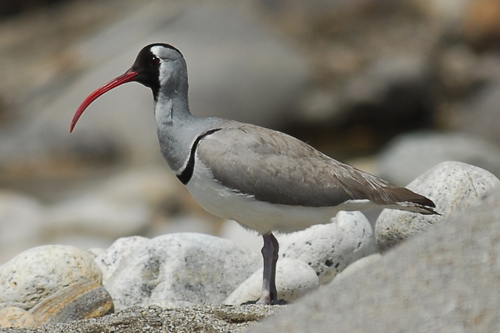
Ibidorhyncha struthersii
SUBFAMILY
Ibidorhynchinae
TAXONOMY
Ibidorhyncha struthersii Vigors, 1832, Himalayas. taxonomy still
unresolved, often placed in own monotypic family.
OTHER COMMON NAMES
French: Bec-d’ibis tibйtain; German: Ibisschnabel; Spanish:
Picoibis.
PHYSICAL CHARACTERISTICS
15.6–16.4 in (39–41cm); 0.59–0.7 lb (270–320 g), bill 2.6–3.2
in (68–82 mm). Distinctive wader with long, decurved, crimson
bill and striking plumage. Dark brown or black face with
white margin towards neck. Neck and upper back bluish gray,
lower back brownish gray and white belly with broad black
band. Legs grayish purple. Female and male similar, female
marginally larger with slightly longer bill. Juvenile browner
with less clearly marked plumage and paler coloring, bill dark
pinkish gray. Unlike stilts and avocets, salt glands are nearly
absent in ibisbill.
DISTRIBUTION
Southeastern Kazakhstan, south to Kashmir and east through
northwestern China, Tibet, and northeastern India to eastern
central and northern central China. Mainly in major mountain
systems of central Asia.
HABITAT
Flat, stony, rivers at high altitudes (1,640–14,435 ft [500–4,400
m]), may occur as low as 330 ft (100 m) in winter.
BEHAVIOR
Territorial, solitary breeders, may roost together outside of
breeding season. Rarely fly unless disturbed.
FEEDING ECOLOGY AND DIET
Feeds during the day, usually singly. Feeds by pecking, probing,
or raking bill through gravel, often forages breast deep in
water. Specializes on insect larvae, occasionally eats small
fish.
REPRODUCTIVE BIOLOGY
Monogamous and territorial, incubation by both sexes. Generally
lays four eggs in April or May in a shallow, sometimes
pebble-lined pit in ground. Eggs usually greenish-gray with
brown speckles, chicks hatch mid-May through late June and
led away from nest by female as soon as they dry, brooded up
to 23 days. Can fly when 45–50 days old.
CONSERVATION STATUS
Not threatened, range is extensive an in areas with few humans.
However, ibisbills are adapted to rather restricted habitat,
so could be vulnerable to habitat destruction from
industrial mining of gravel from river-beds and building of hydro-
electric plants. Nest trampling by sheep, predation by
foxes and disturbance by humans can also be a problem.
Species not known to have been kept in captivity, as of 2001
no captive-breeding programs are in operation.
SIGNIFICANCE TO HUMANS
None known.
Photo Gallery of - Ibisbill
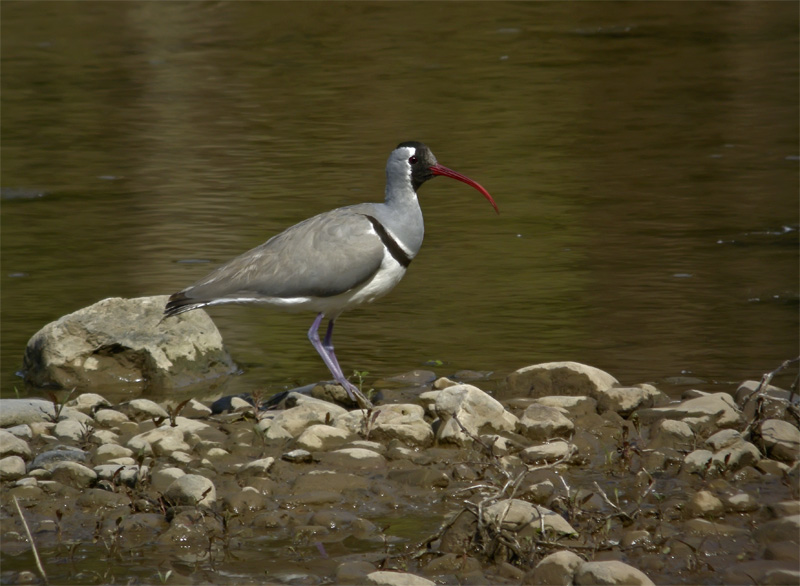
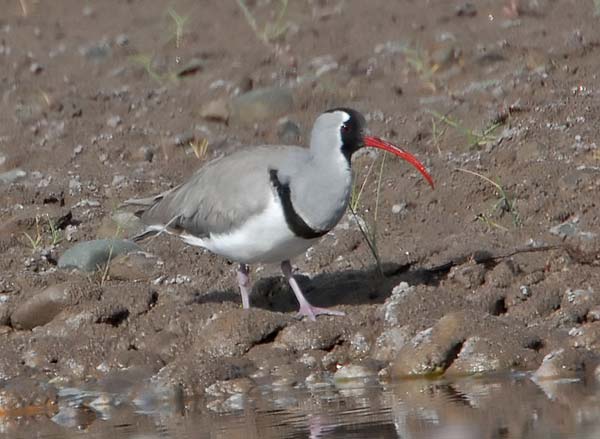
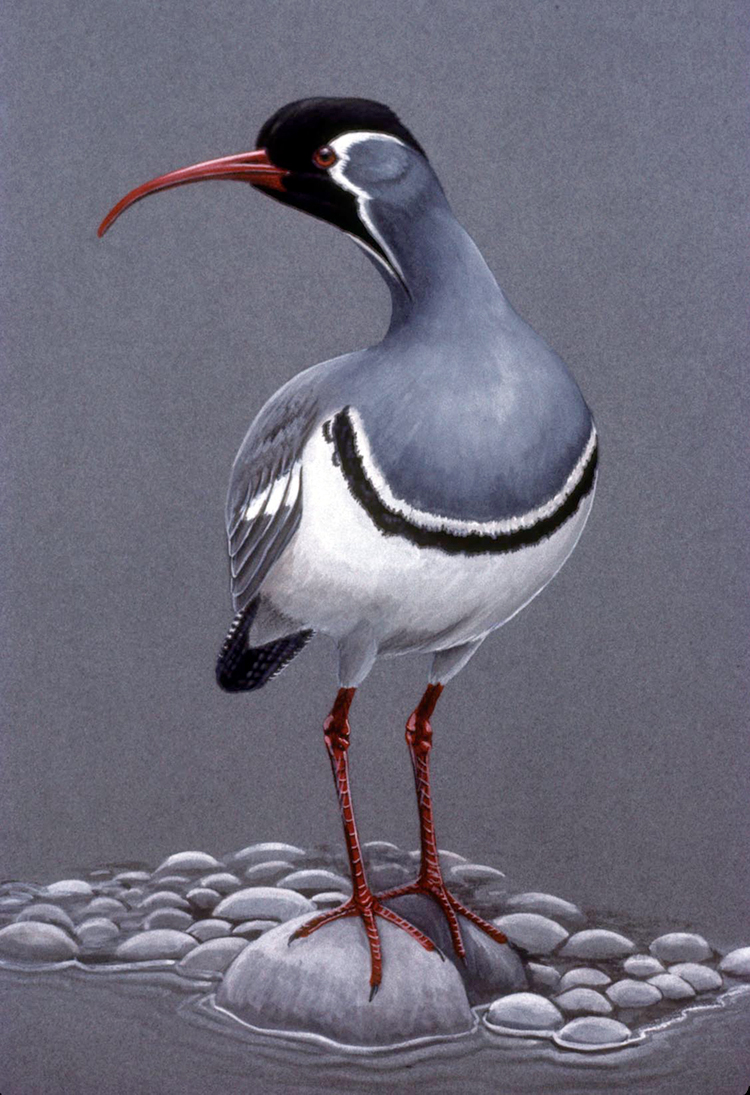
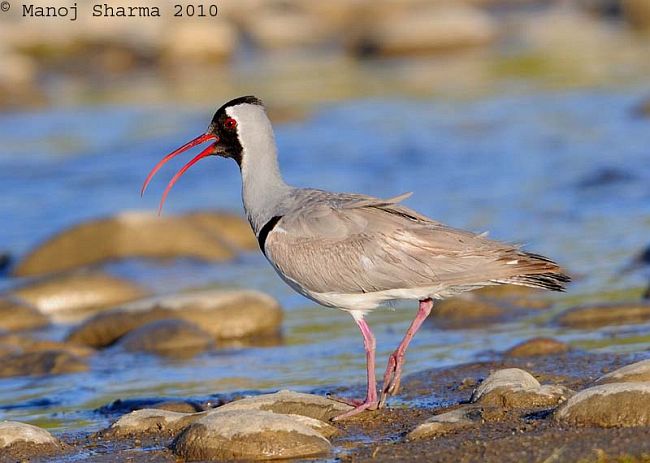
 Animalia Life
Animalia Life